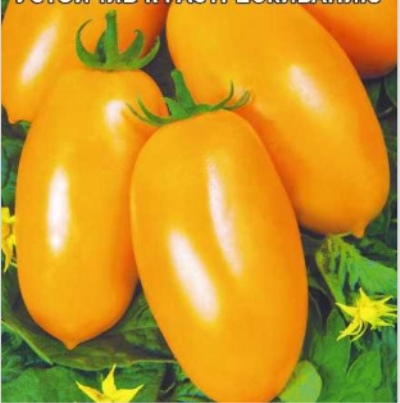
- Authors: Kudryavtseva G.A., Fotev Yu.V., Altunina L.P., Kotelnikova M.A., Kondakov S.N.
- Year of approval: 2008
- Category: grade
- Growth type: indeterminate
- Appointment: fresh consumption, for pickling and preserving
- Ripening period: early
- Growing conditions: for open ground, for film greenhouses
- Leaves: medium, green
- Unripe fruit color: green
- Ripe fruit color: yellow
The name of the tomato Nikita is funny only outwardly. In fact, this variety of tomatoes must be taken quite seriously. An important role is played by objective information about the landing pattern, resistance to pathologies and other aspects.
Breeding history
Such a plant was registered in 2008. Therefore, it can be considered a good example of breeding in the 2000s. Breeders such as:
Kudryavtseva;
Fotev;
Altunina;
Kotelnikov;
Kondakov.
Description of the variety
Nikita is inclined to develop in an indeterminate way. You can meet the planting of such a plant both in the greenhouse and in the open field. The foliage is medium in size. It is characterized by a simple green color. The plant is versatile.
The main qualities of the fruit
At first, Nikita's berries have a simple green color. But as they become ripe, they will turn yellow. The mass of tomatoes is 60-250 g. They have a cylindrical shape. One brush contains from 3 to 7 berries.
Other features:
smooth skin;
simple type of inflorescences;
stalk with articulation.
Taste characteristics
Tomato Nikita is sweet. Its main taste is mixed with a harmonious sour note. The pulp is moderately firm. The crop is actively used for salads and salting.
Ripening and fruiting
The Nikitka variety belongs to the early group. If the culture has begun to bear fruit, it will yield a crop for quite some time. Usually berries appear 107-115 days after planting. As always, this indicator depends on the weather and agricultural practices.
Yield
The usual collection is 4.9-5.2 kg per 1 sq. m. The spread is small, and therefore the weather is not too significant. But the importance of agricultural technology should not be underestimated.
The timing of planting seedlings and planting in the ground
Seeds are usually sown in seed containers in March. After that, the seedlings should develop from 60 to 65 days. However, it is not very wise to rush to transfer plants into the ground. It is necessary to consider how exactly they will grow. They also pay attention to the warming up of the soil, and the danger of recurrent frosts.

Growing tomato seedlings is an extremely important process, because it largely depends on whether the gardener can harvest at all. All aspects must be taken into account, from seedbed preparation to planting in the ground.
Landing scheme
In this regard, the Nikitka variety does not represent anything surprising. It is recommended to grow it according to the 40x40 cm system. With other planting options, a good result is not guaranteed.

Growing and care
It is imperative to remove excess stepsons from Nikita's tomatoes. The plants themselves will also have to be placed on supports.A very important feature is the correct formation, without it it will hardly be possible to achieve success. It is believed to be resistant to fruit cracking, but it is still necessary to provide good conditions for it. It is necessary to form bushes in 1 or 2 stems.
In order for the seedlings to develop successfully, it is necessary to sow seeds on slightly compacted soil. Mulching with peat is recommended. In some cases, it is replaced with ordinary soil (the layer is about 1 cm). It is recommended to first cover the seedlings with foil and keep at a temperature of about +25 degrees. When shoots appear, the film cover needs to be removed.
At this moment, the seedlings are placed in a bright place. There it will be necessary to keep them for 5-7 days at + 15 ... 16 degrees. Then the temperature is increased to + 20 ... 22 degrees. When 1-2 true leaves appear, they resort to diving. Seedlings at the age of 60-65 days are ready for planting if they have 6-7 true leaves and at least 1 flower cluster has appeared.




A plant needs different micronutrients at each stage of growth. All fertilizers can be divided into two groups: mineral and organic. Folk remedies are often used: iodine, yeast, bird droppings, eggshells.
It is important to observe the rate and period of feeding. This also applies to folk remedies and organic fertilizers.


Growing regions
This variety will be in demand by gardeners:
Siberia;
Ural;
The Far East;
the Volga and northwestern regions;
north and center of the European part;
Central Black Earth Region;
North Caucasus.

























































































